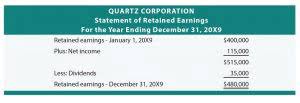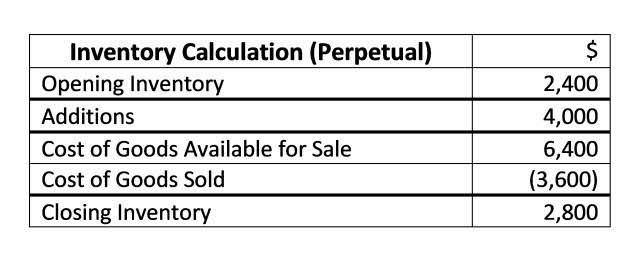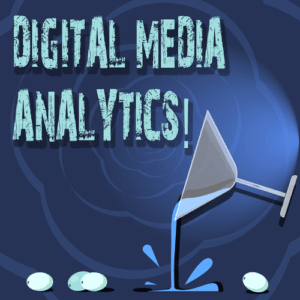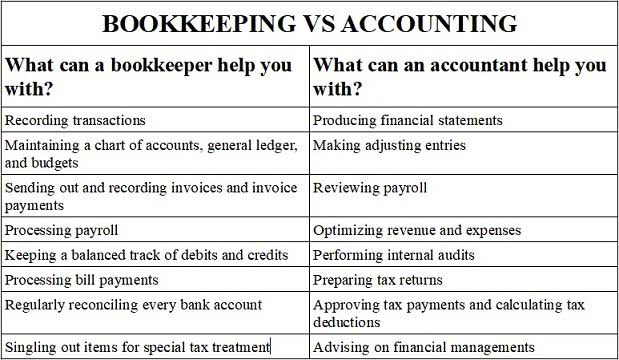Expenses will provide benefits to the entity during the same accounting period. If the expenses are incurred, they will provide benefits to company in the same period. For example, when we pay the employee this year, they will work for us only this year.
- Although the sewing machine is useful and valuable throughout the entire ten years, it’s more efficient when it’s new and enables you to clothes more quickly in the first few years.
- One example of this is that cash, an asset, is used to pay for most business expenses.
- So you get the real big picture from the financial year vs. some numbers coming out of your random period.
- Determining whether a cost should be capitalized depends on whether the expense results in a future economic benefit beyond the current accounting period.
- Equity reflects shareholder ownership and is influenced by factors such as retained earnings and share capital.
- For example, the cost incurred on researching a new production method cannot be capitalized as an asset because of the uncertainty regarding its commercial success.
Join thousands of business owners who trust us
For instance, lease payments reported as operating expenses rather than financing activities can lead to incorrect interpretations of cash flow. On the other hand, balance sheets consist of both short-term and long-term assets, current and long-term liabilities, and equities, such as stock. At the same time, liabilities such as debt payments or assets like investments are not mentioned here since they do not directly affect profits or losses during that specific period.
Assets vs. Expenses: Understanding the Difference
For instance, the Internal Revenue Code (IRC) Section 162 allows businesses to deduct ordinary and necessary expenses, impacting taxable income. Understanding these deductions is vital for tax planning and compliance, as they directly affect tax liability. In contrast, immediate expenses directly reduce operating cash flow, as they are recorded in the operating activities section of the cash flow statement. Companies with tight cash flows often benefit from expensing costs immediately, aligning their tax deductions with cash outflows to optimize liquidity. Capital expenditures, on the other hand, involve longer-term investments like office furniture, computers, and equipment with a useful life extending beyond a single fiscal year. The choice of depreciation method—whether straight-line or accelerated—can significantly affect financial statements and tax obligations.
Capital expenditure
For example, an office assistant’s salary will be recorded in the accounting period in which he or she has rendered services for the business. Some assets are charged as an expense in subsequent periods to match them against their economic benefits. Some may assume that if the assets exceed liabilities, then the company is profitable. Income statements focus on profitability, and investors primarily use them to gauge whether the company is generating positive or negative cash flow. After accounting for non-operating items such as taxes and interest expense, net income, also known as the bottom line, is calculated.
What Is the Difference Between P&L and Balance Sheet?
Supplies, small tools, and similar items usually are debited to expense accounts when they are purchased. You may decide to debit the payment of property taxes to an expense account, even though the tax payment applies to several months. You can decide to debit a payment for insurance protection to an expense account in the month you pay the bill, even though the insurance protection applies for a full year.
- Understanding the distinction between office expenses and supplies is crucial for both accounting accuracy and tax compliance.
- Assets appreciate over time and can be used as collateral, whereas expenses are incurred to maintain operations and generate revenue.
- However, this equation only reflects what the company owns versus what it owes at a specific point in time and does not indicate profitability.
- Expenses are charged to the income statement of the period in which they are incurred.
- Understanding these deductions is vital for tax planning and compliance, as they directly affect tax liability.
- If you write a check for the electric bill, an expense account (Utilities) receives the debit, and Cash (the checking account) receives the credit.
The Board apparently believed that this information is more understandable to outside decision makers if a single standard process was established. GAAP, the recoverability test and the fair value test must be used when impairment is suspected. Some might argue that this process is not the best method for determining an impairment loss. Standardization, though, helps to better ensure universal understanding of the figures being reported. Assets can be both long-term and short-term, as well as tangible (physical) or intangible (non-physical). Generally, assets as well as expenses are brought about when you purchase the raw material or any sort of service for your company therefore, one might think that asset and expense are alike.
Types of Assets
Payment for the services provided by employees (salaries and wages), for telephone and electricity used in the current period, and for other services used in the period are expenses. Under Section 179 of the IRS code, businesses can elect to expense the cost of a fixed asset in the year of purchase, subject to certain limits and restrictions. It’s easy to record and account for assets and expenses with what is the difference between an asset andan expense invoicing software like Debitoor.
Understanding the distinction between office expenses and supplies is crucial for both accounting accuracy and tax compliance. While these categories may seem similar, they carry distinct implications for financial statements and tax filings. This article examines how these differences affect cost categorization and financial management for businesses. In the accounting system, items that a company buys to produce goods or services are written off to reduce taxable income and determine profit. These purchases are classified as either assets or expenses, and are “written off” in totally different ways.
Conversely, expenses are the costs incurred in the ordinary course of business, such as rent, utilities, and salaries. Immediate expenses, by contrast, are recorded on the income statement in the period they occur. These costs, which don’t provide long-term benefits, reflect short-term financial performance. Examples include routine maintenance or office supplies, which are expensed immediately, affecting net income for that period without altering the balance sheet. Classifying costs as capital expenditures or immediate expenses significantly affects operating cash flow. Capital expenditures, recorded in the investing activities section of the cash flow statement, don’t immediately impact operating cash flow.
An expense is money you may need to spend, but after a year, there is nothing lasting to show for it because the item gets consumed or is used up. Expenses include things like rent, food, utilities, clothes, office supplies and health insurance. In this tutorial, I’ve explained what assets and expenses are, and provided examples of each. I’ve shown how to enter an expense in the accounting system, and how to enter an asset in the accounting system.
Some items that theoretically should be recorded as assets are debited to expense accounts. If the item were debited originally to an asset account, it must be debited to an expense account in the later period, or periods, in which it is used up. If the debit is made to expense immediately, this additional record keeping is avoided. The de minimis safe harbor election, therefore, provides a valuable tax planning opportunity for small businesses.
When you pay rent, however, there’s nothing left at the end of the month; there’s no accumulating value. Assets and expenses are two of the five account types in the modern accounting system. Differences between them include the types of purchased items they cover, how they are entered into the accounting system, and the financial reports they affect.









